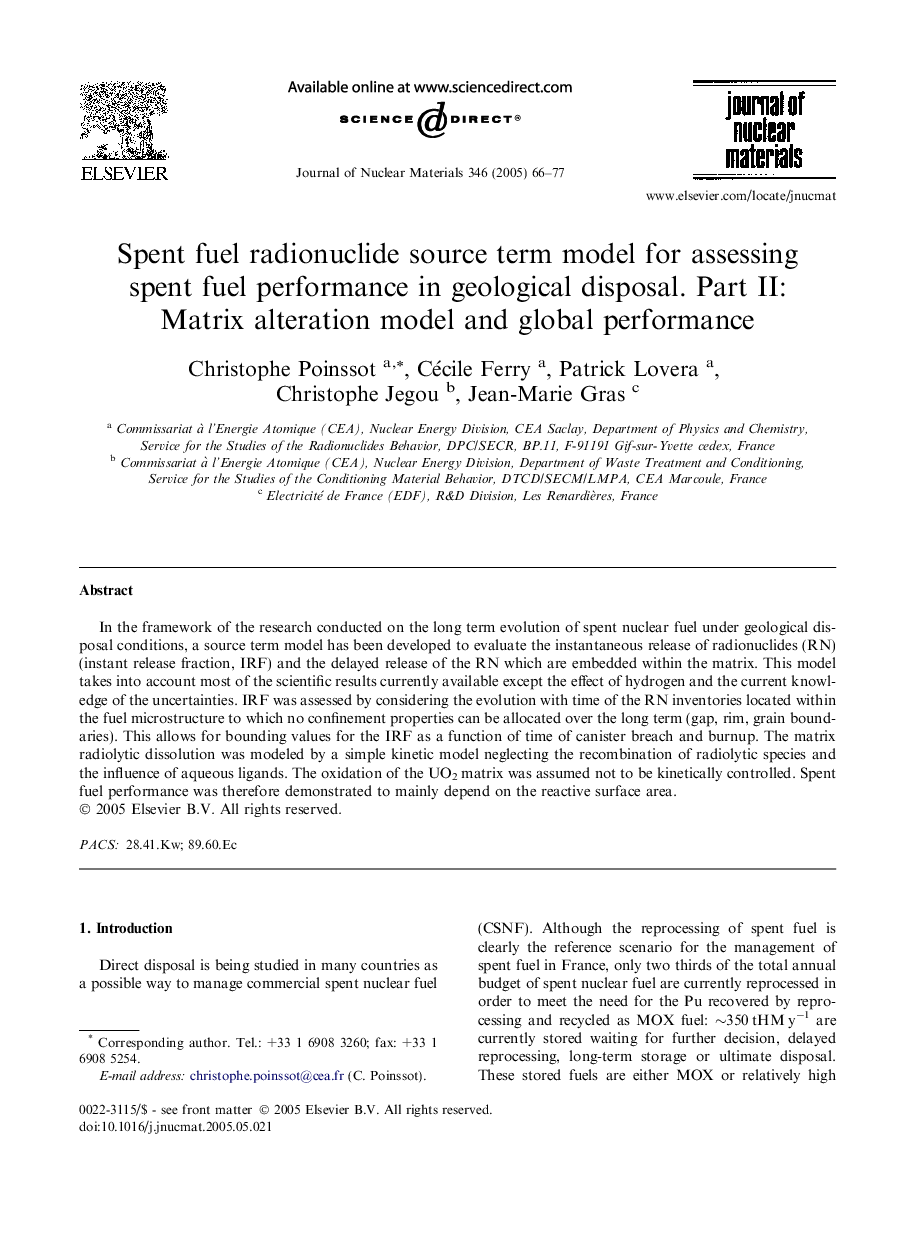| Article ID | Journal | Published Year | Pages | File Type |
|---|---|---|---|---|
| 10645218 | Journal of Nuclear Materials | 2005 | 12 Pages |
Abstract
In the framework of the research conducted on the long term evolution of spent nuclear fuel under geological disposal conditions, a source term model has been developed to evaluate the instantaneous release of radionuclides (RN) (instant release fraction, IRF) and the delayed release of the RN which are embedded within the matrix. This model takes into account most of the scientific results currently available except the effect of hydrogen and the current knowledge of the uncertainties. IRF was assessed by considering the evolution with time of the RN inventories located within the fuel microstructure to which no confinement properties can be allocated over the long term (gap, rim, grain boundaries). This allows for bounding values for the IRF as a function of time of canister breach and burnup. The matrix radiolytic dissolution was modeled by a simple kinetic model neglecting the recombination of radiolytic species and the influence of aqueous ligands. The oxidation of the UO2 matrix was assumed not to be kinetically controlled. Spent fuel performance was therefore demonstrated to mainly depend on the reactive surface area.
Related Topics
Physical Sciences and Engineering
Energy
Nuclear Energy and Engineering
Authors
Christophe Poinssot, Cécile Ferry, Patrick Lovera, Christophe Jegou, Jean-Marie Gras,
